|
The lights of Times Square,
The Spires of the Empire State and Chrysler buildings, Rockefeller
Center, the United Nations Headquarters, stores on 5th Avenue, museums,
theaters, and grand buildings galore – all are found in the midtown area
between 34th and 59th streets, extending from the East River as far as
Broadway. The concentration of attractions makes this the most important
area of the city for visitors, and many a day can be spent taking in
the sights. Fifth Avenue, the dividing line between the East and West
sides, is in many ways the Main Street of Manhattan, and in itself
offers a generous sampling of the city’s riches, from architecture to
commerce. Midtown also reflects the city’s characteristic diversity,
with attractions that range from the bustling retail of the Diamond
District, to the stately halls of the New York Public Library.
|
Taking tea is an increasingly popular custom in New York. Among the top places are the elegant Four Seasons Hotel, 57 East 57th Street near Madison , the Tea Box Café at Takashimaya, the tea room at the St. Regis Hotel, and the salon de thé at Fauchon, 442 Park Avenue at 56th .
|

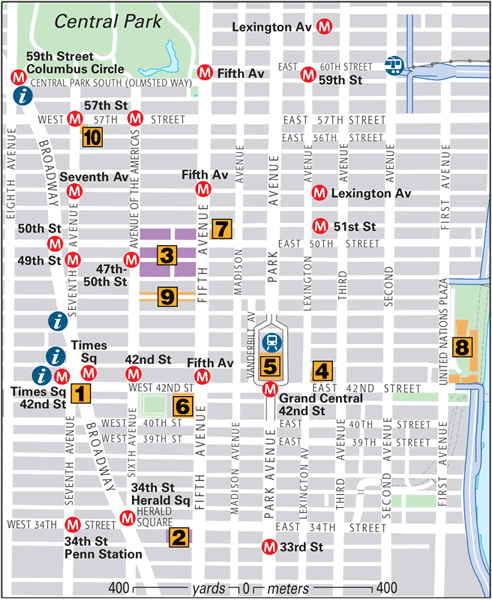
Sights Times Square The city’s most famous intersection, and symbol of the lively theater district .
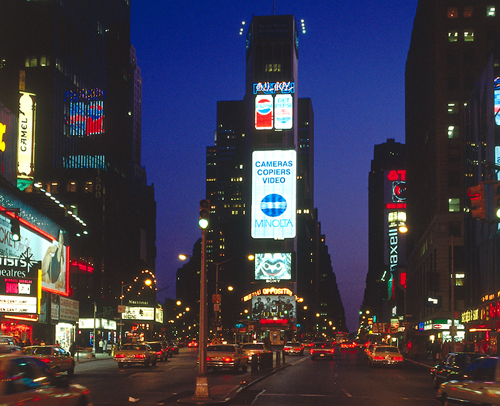
Times Square
Empire State Building New
York’s most famous, and tallest, skyscraper is a classic. Since the
structure was completed in 1931 more than 120 million visitors have
looked down on the city from its observatories .
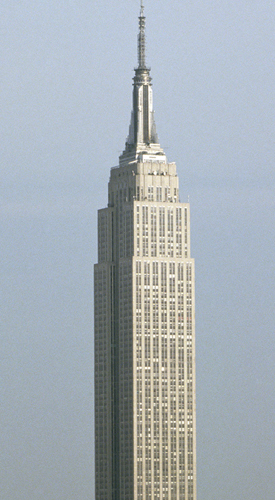
Empire State Building
Rockefeller Center Rockefeller Center
is the hub of midtown New York, alive with activity day and night,
integrating shops, gardens, dining and office space, and its own aerial
vantage point.
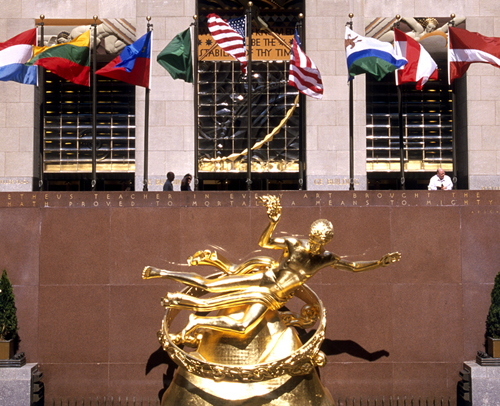
Prometheus, Rockefeller Center
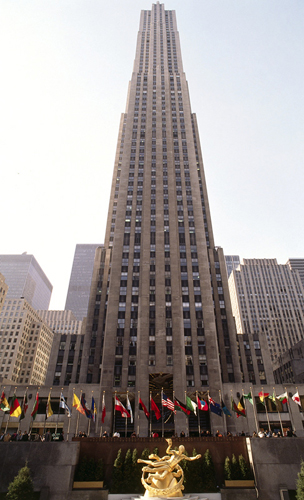
Rockefeller Center
Chrysler Building The
unmistakable shimmering spire of the Chrysler Building is one of New
York’s great landmarks. The grand Art Deco lobby, once used as a
showroom for Chrysler cars, has been restored to show off its lavish
marble and granite, and a vast painted ceiling depicts transportation
scenes of the late 1920s.
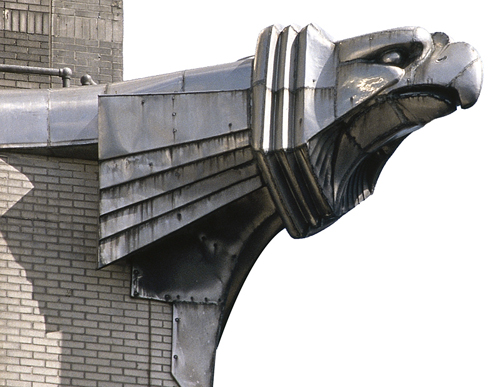
Chrysler Building
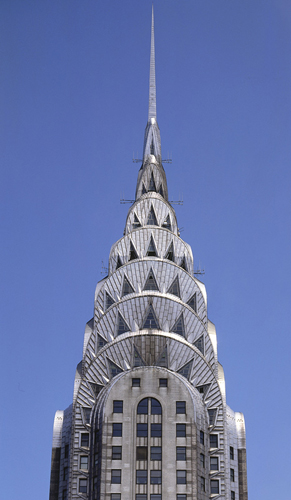
Chrysler Building
Grand Central Terminal One of the world’s great rail terminals, the outstanding Beaux Arts building is New York’s most visited, with 500,000 people passing through it
daily. Since restoration work was completed, its admirers are no longer
limited to travelers. Grand Central has become an attraction in its own
right, with
shops, close to 50 restaurants and food purveyors, and the New
York City Transit Museum.
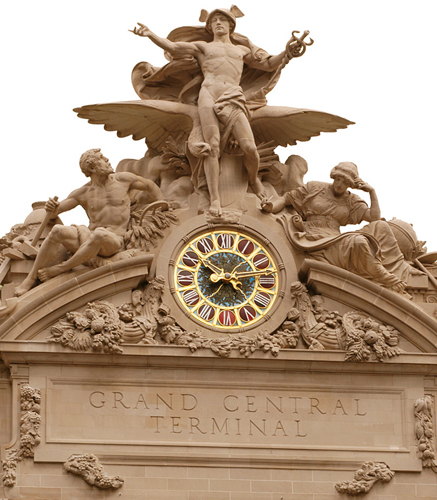
Grand Central Terminal
New York Public Library Carrère
and Hastings won a competition for the design of this great Beaux Arts
building. Their genius reached its height in the Main Reading Room, a
paneled space as majestic as a cathedral, extending almost two city
blocks, with enormous arched windows, 18 grand chandeliers, and an
elaborately decorated, vaulted ceiling .
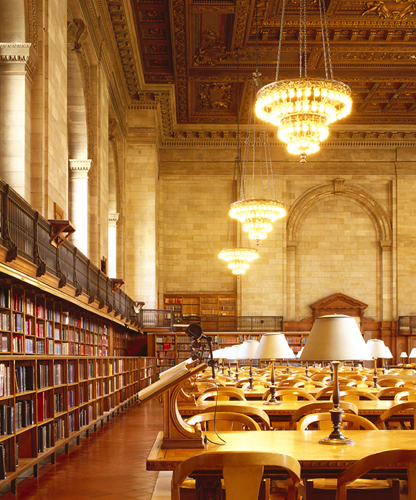
New York Public Library
St. Patrick’s Cathedral America’s
largest Catholic cathedral is a place where more than 5,000 people
worship every Sunday. When Archbishop John Hughes decided to build a
cathedral here in 1850, many criticized the choice of a site so far from
the city’s center at the time. Today his foresight has given the church
one of the best locations in Manhattan .
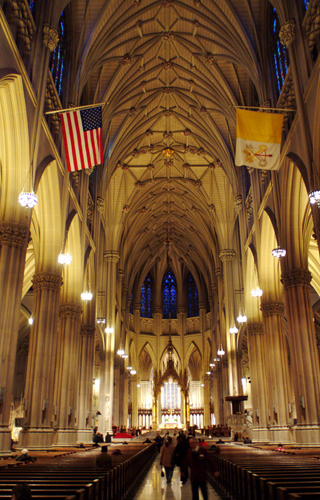
St. Patrick’s Cathedral
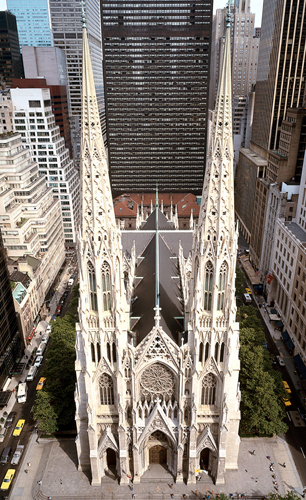
St. Patrick’s Cathedral

William O. Partridge’s Pieta, St. Patrick’s Cathedral
United Nations Headquarters John
D. Rockefeller, Jr. donated $8.5 million to purchase the 18-acre East
River site, and American Wallace Harrison worked with international
consultants to create this striking headquarters. The United Nations was
formed in 1945, to work for peace and economic and social well-being
around the globe. Currently, 192 members meet in the General Assembly,
the closest thing to a world parliament. Guided tours allow visitors to
see the various council chambers, the General Assembly Hall, and many of
the works by prominent artists, including Marc Chagall and Henry Moore. Diamond District Jewels
glisten in every window of this block, the center of the city’s retail
and wholesale trade. It handles 80 percent of the diamonds coming into
the U.S. Developed largely by Orthodox Jews, the district grew in
importance during the World War II when thousands fled the diamond
centers of Antwerp and Amsterdam to settle in New York. Above the shops
are offices and workshops where the stones are cut and set.

Carnegie Hall New
York almost lost its most famous concert hall when the New York
Philharmonic moved to the newly built Lincoln Center in the 1950s.
However, a coalition, led by violinist Isaac Stern, successfully fought
to save the building from demolition. It was bought by the city in 1960
and became a National Historic Landmark in 1964. A major 1986 renovation
restored much of the original appearance while updating technical
facilities and preserving the hall’s famous acoustics. Musical
memorabilia fills the halls and the Rose Museum . Tours are available for a fee.
|